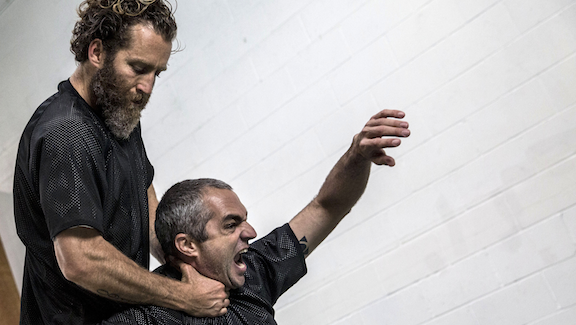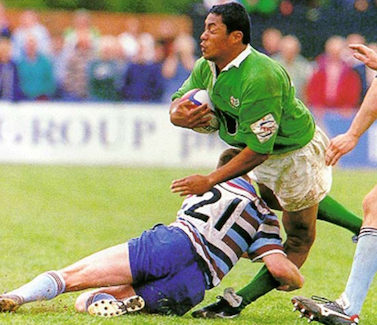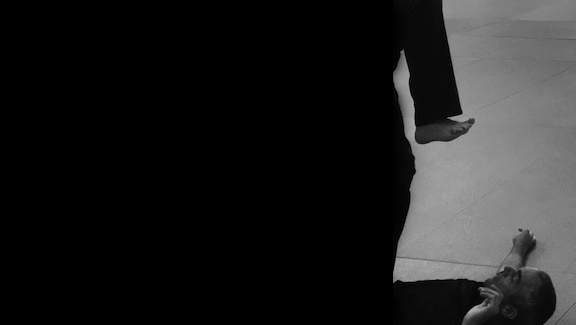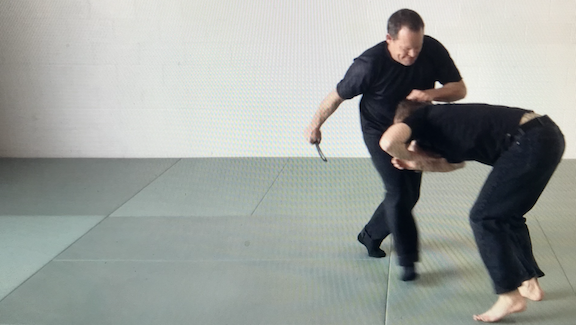
We teach the use of violence as a survival tool: how the human machine breaks, how to do that work with your bare hands, how to take advantage of the results. We cover striking, joint breaking, throwing, knife, baton, firearms, multi-man work, as well as grabs, holds and chokes.
But what does that word salad really mean?
Violence
Violence is physical force intended to cause harm. We call it what it is because padding language for comfort leads to indistinct outcomes. “Self-defense” is a moral imperative and a legal finding — it’s not a description of direct action with a concrete result. “Hurting people” is.
Discomfort with this idea is normal, natural and desired for 99.999% of your interactions with other people across your entire lifetime — but not during the black swan event of your attempted murder. There you will need to set aside all of the imaginary constructs that make up society and civilization and behave like a primate using physics and physiology.
Reality is disappointing and inconvenient, but we have to train for it as it stands, not how we wish it were. The bottom line is that in violence you have to hurt people.
Injury
Violence begins and ends with debilitating injury. It is the sole arbiter of success — the one who gets it right first, wins. This is a single piece of critical anatomy subjected to catastrophic volume change. You have to break it so it doesn’t work anymore. A ruptured eyeball, a crushed throat, a knee broken backwards — these things give us immediate advantages:
• Loss of function
• Involuntary movement in response to the injury
• Momentary helplessness
The goal is to break something, then use these advantages to break the next thing, and the next, and so on until we achieve a nonfunctional state, meaning you’d feel comfortable turning your back on the person and walking away. This can be everything from unambiguous incapacitation to unconsciousness or death, depending on the needs of the situation.
Striking
The most obvious way to cause injury is through blunt force trauma — body-weighted collisions of skeletons with a single piece of vulnerable anatomy caught in the middle. Instead of punching and kicking (the action of the limbs) we need to think from the ground up and crush things with our mass in motion. It’s not about how far you can reach, but how far you can step, how far you can move your belt buckle (center of gravity) through their anatomy. Think about how much you weigh, and then imagine hurling that three feet through a single square inch of them — their eye, their throat, their knee. This is how you break things — by minimizing the anatomy while maximizing the physics. Mass in motion leveraged by your skeleton gets it done.
This is the base engine of violence we will use to cause all injury.
Joint Breaking
Joint breaking is a special case of striking where we cause injury by using mass in motion and leverage to force joints beyond their pathological limit. This isn’t “joint locking,” submission or pain compliance — we will grind the joint to the end of its range of motion and then ensure that we have:
• Mechanical advantage (leverage)
• Body weight positioned to drive the work
• Space for follow-through sufficient to tear out or dislocate the joint
In other words, we will make sure that the only possible outcome if we throw our weight into it is a broken joint.
We train to break every joint in the human body — from the wrist (to cripple the hand) to the neck (for paralysis or death).
Throwing
Throwing is another special case of striking where we cause injury by using mass in motion to disrupt structure and balance and drive the person into a targeted collision with the ground — usually head first for debilitating head and neck trauma. This can be as simple as kicking someone’s leg out from under them or as complicated as a shoulder throw. Either way the goal is to bounce the brain off the planet.
Strike – Break – Throw
While anyone can be trained to be immediately effective (striking to cause injury), the highest expression of the work above is to strike, use that injury to effect a joint break, and then use that loss of balance to effect a throw. This is the path of efficiency, the goal of ongoing training.
Tools — Knife, Baton, Firearms
Once you have the base engine of violence thudding along — mass in motion leveraged by the skeleton — we can clip things onto the end of the skeleton to magnify our efforts and do things we can’t do with our bare hands. Knives allow us to penetrate deeply into the body and open up the circulatory system to cause him to bleed out; batons, being harder than the stuff we’re made of, allow us to access the entire skeleton as a target, breaking bones and directly accessing the brain. Both of these are nothing without that base engine: You must generate the physics for the tool to amplify. (Firearms are an exception as the physics are prepackaged in the powder charge.)
On the flip side — when the other person has a tool — the answer is the same: You have to injure them. We don’t practice knife-, stick-, or gun-defense/fighting; we practice hurting people who are attempting to use the tool.
Multi-Man Work
You never know how many people are involved until they’re all there — so we’re always going to assume it’s more than one. You can’t realistically injure more than one person at a time (this is why humans invented explosives and machine guns) so we need to use the initially injured person and movement (covering ground) to give ourselves the space and time required to injure the rest of them one-by-one. No one’s going to wait their turn like a kung fu movie, so you have to go on the attack and make them have to deal with you.
Grabs, Holds and Chokes
This is injuring people while they hang on to you, doing all the things that aren’t allowed in competition — gouging eyes, crushing throats, getting fistfuls of groin. All you need is that initial injury to get to the rest. The key is to be the problem, rather than looking at it as a problem for you to solve. Make them want to get away from you.
Everything above is what mat time is all about — serial target practice on the human machine to shut it off. We roll with training knives, batons and firearms on the mats; with our partners trying to punch, kick, stab, beat, shoot, out-number and grapple us while we strike, break and throw while using knives, batons and firearms. It’s a low-velocity scrum where anything goes and the answer is always the same: ATTACK & INJURE.
Training
All of this work is pulled from our 10-year curriculum — in writing — three massive tomes that describe the 1,560 stepping stones from absolute beginner to Master Instructor. We can literally show you something new at every class, three times a week, for a decade — with no repetition.
All well and good if you live near an instructor and want to take on the training as a lifestyle — but what about everyone else? The beauty of the curriculum is that it’s modular, and we can pull it apart and put it together in any number of ways to meet your needs:
“Dangerous in a Day” — This is a one-day course designed to make you baseline effective at violence. You’ll learn how to cause debilitating injury to 10 different targets, from the eyes to the ankles. At the end of the day we’ll use that new skill in a single module tailored to the interests of the group (grabs, holds and chokes; knife; firearms; multi-man, etc.).
2-Day Crash Course — This is our Gold Standard for training: two full days of hands-on mat work including knife, baton, firearms, multi-man, grabs-holds-chokes, as well as in-depth lectures on decision-making in violence (when to pull the trigger and when not to) and how the law views violence.
Multi-day courses / tailored events — We can do as many days with as much material as your group desires. Want five days with joint breaking and throwing in the mix? Three days with a special emphasis on firearms? We can do that. We can arrange something special here in sunny San Diego (have you seen our zoo?), or travel to you. Just get in touch and let us know how we can help!
When it comes to violence, we have it covered from the stupid-simple (finger in the eye) to the crazy-complex (a joint-break throw using a knife or baton). We can train short-term, long-term, or lifelong. It all comes down to what you need, and what you want — regardless, we can make it happen.
— Chris Ranck-Buhr











